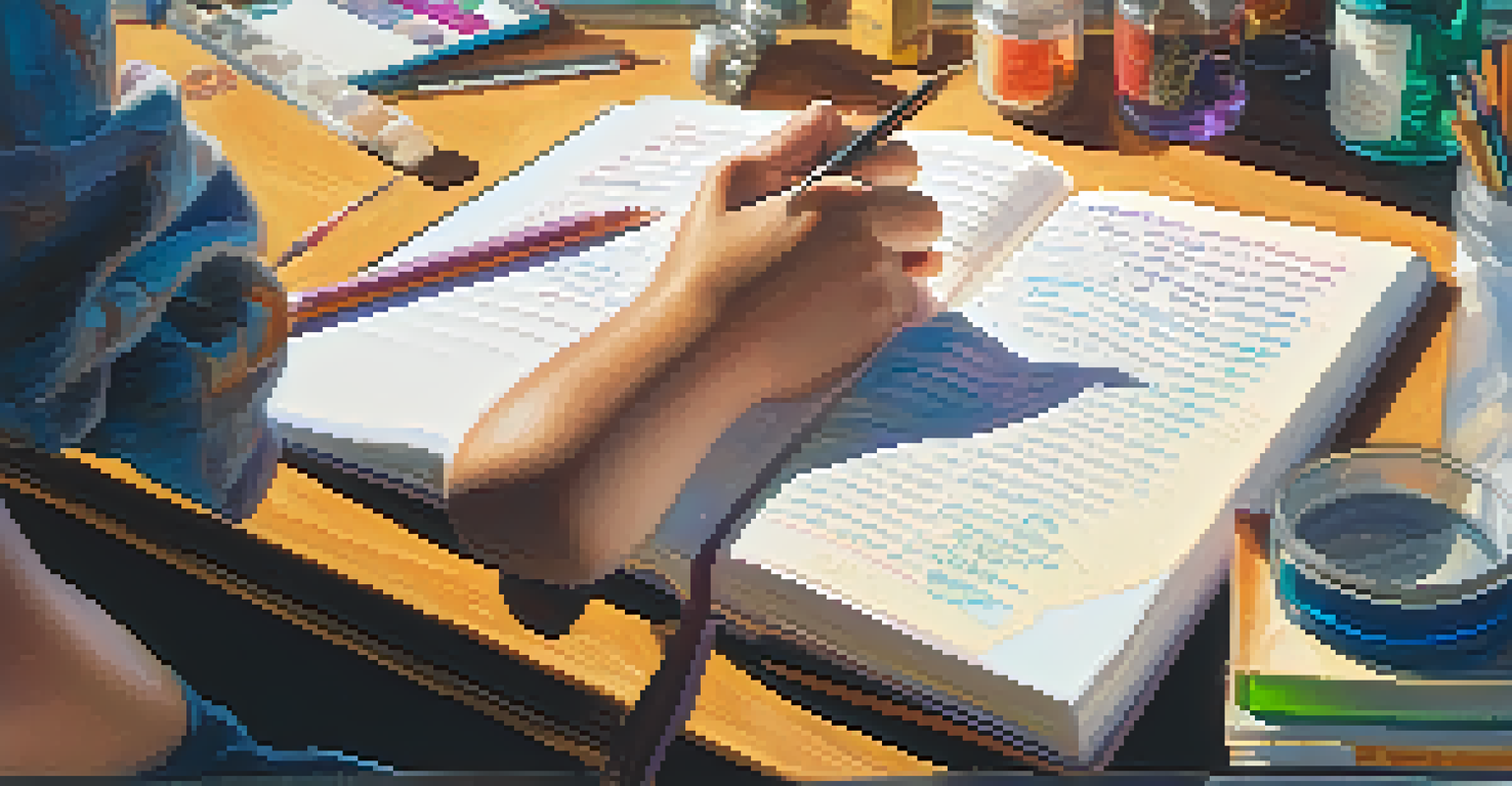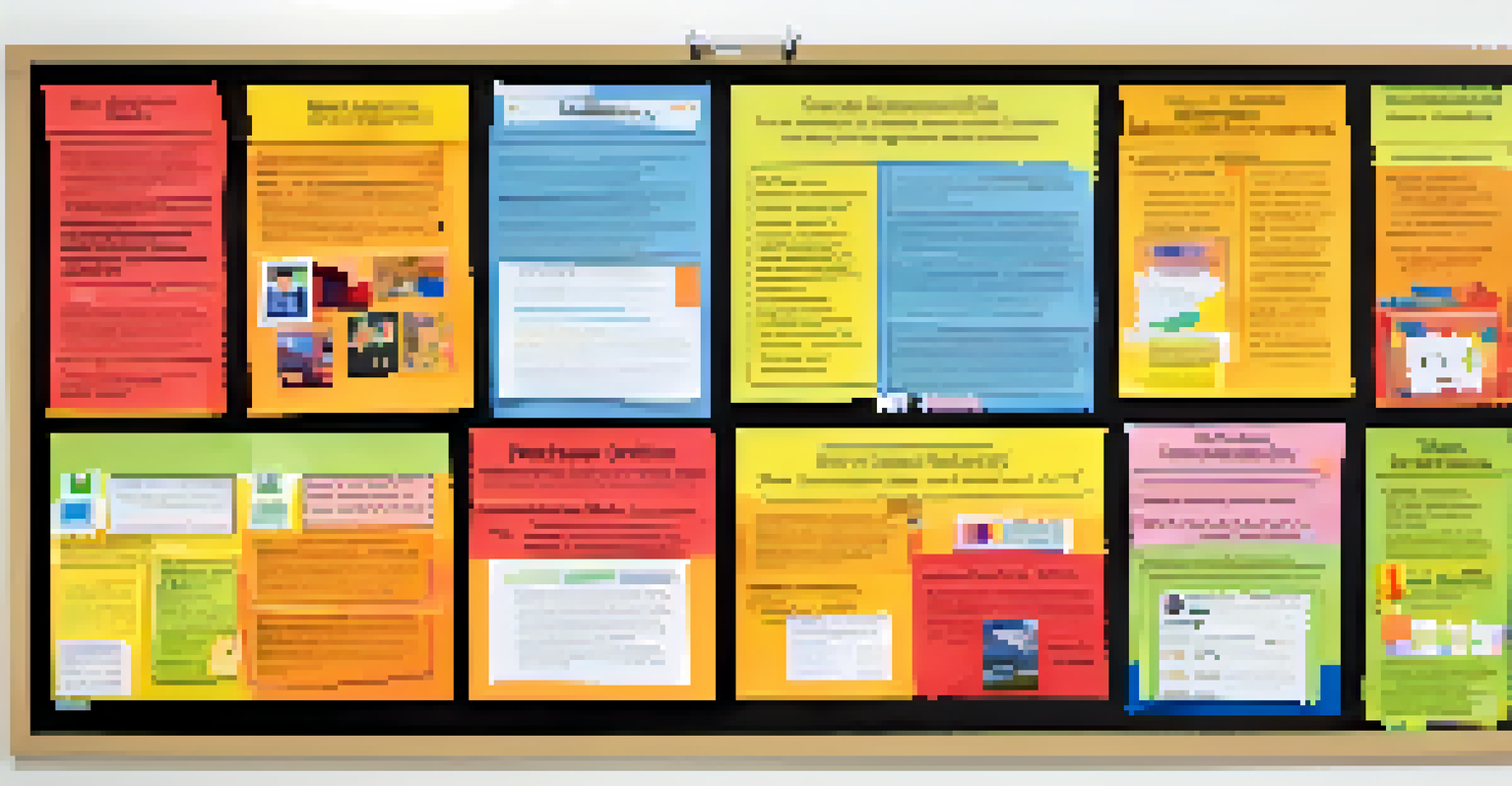Creating Assessments that Encourage Lifelong Learning Habits

Understanding Lifelong Learning and Its Importance
Lifelong learning is the continuous, self-motivated pursuit of knowledge. It’s not just a buzzword; it’s essential in a world that rapidly evolves. By fostering these habits, we equip learners with the skills to adapt and thrive throughout their lives.
Lifelong learning is no longer a luxury but a necessity for success in the 21st century.
Imagine lifelong learning as a garden that needs constant nurturing. Just as some plants thrive in certain conditions, individuals flourish when they engage with knowledge in meaningful ways. Assessments play a crucial role in this process, acting as the sunlight and water that help this garden grow.
Ultimately, promoting lifelong learning through assessments helps individuals become independent thinkers and problem solvers. This mindset not only benefits personal growth but also contributes positively to society as a whole.
Designing Assessments that Inspire Curiosity
Curiosity is the spark that ignites a love for learning. When designing assessments, it's vital to create questions that make learners ponder, explore, and investigate topics deeply. This can be achieved by incorporating open-ended questions or real-world scenarios.

Consider an assessment that asks students to solve a community problem rather than just answer textbook questions. This real-world connection makes the learning process relevant and encourages learners to seek out information beyond the classroom.
Lifelong Learning is Essential
Continuous learning equips individuals with the skills to adapt and thrive in a rapidly evolving world.
By fostering curiosity through assessments, we inspire learners to ask 'why' and 'how,' which are fundamental questions that lead to deeper understanding and lifelong learning habits.
Incorporating Feedback Loops in Assessments
Feedback is like a compass that guides learners on their journey. Incorporating timely and constructive feedback into assessments helps students understand their strengths and areas for improvement. This not only boosts confidence but also encourages a growth mindset.
The more that you read, the more things you will know. The more that you learn, the more places you’ll go.
For example, instead of simply grading an assignment, consider providing specific comments that highlight what was done well and what can be improved. This fosters a dialogue between the educator and learner, making the assessment a continuous learning experience.
With effective feedback loops, learners become more reflective about their work, leading them to seek improvement and embrace the idea that learning is an ongoing process.
Utilizing Diverse Assessment Methods
Not all learners shine under traditional assessment methods. By incorporating diverse assessment strategies such as projects, presentations, and peer reviews, we cater to different learning styles and preferences. This diversity not only engages students but also promotes deeper learning.
Think of assessments as a toolkit; each tool serves a different purpose. A project might allow for creativity, while a presentation tests verbal communication skills. By mixing these methods, learners can demonstrate their knowledge in ways that resonate with them.
Curiosity Fuels Deeper Understanding
Designing assessments that spark curiosity encourages learners to explore topics more deeply and develop lifelong learning habits.
This approach also encourages collaboration, as group projects and peer assessments foster social learning, helping students develop essential skills that contribute to lifelong learning.
Setting Clear Learning Goals and Outcomes
Clear learning goals provide a roadmap for both educators and learners. When assessments are aligned with specific outcomes, students better understand what is expected of them and how they can achieve those goals. This clarity helps to focus their efforts and attention.
For instance, if a learning goal is to develop critical thinking skills, the assessment should include tasks that require analysis and evaluation rather than mere recall of facts. This ensures that students are not only preparing for tests but are also building skills for their future.
By setting clear expectations, we empower learners to take ownership of their education, which is a vital component of fostering lifelong learning habits.
Encouraging Self-Assessment and Reflection
Self-assessment encourages learners to take charge of their own progress. When students reflect on their work and evaluate their understanding, they develop metacognitive skills that are crucial for lifelong learning. This process helps them identify what they know and what they still need to learn.
Consider incorporating reflective journals or self-evaluation rubrics into your assessments. These tools allow students to articulate their thoughts and feelings about their learning experiences, fostering a sense of responsibility and self-awareness.
Supportive Environments Foster Growth
Creating a nurturing learning environment allows students to feel safe and motivated, encouraging a lasting love for learning.
Ultimately, encouraging self-assessment creates a culture of reflection, where learners continuously evaluate their knowledge and adapt their strategies, laying the groundwork for lifelong learning.
Fostering a Supportive Learning Environment
A supportive learning environment is essential for encouraging lifelong learning. When learners feel safe to express their thoughts and take risks, they are more likely to engage deeply with the material. Assessments should reflect this environment by being inclusive and encouraging rather than punitive.
Think about creating assessments that celebrate effort and progress, not just the final outcome. Highlighting improvement and growth creates a positive atmosphere where students feel motivated to learn.

By promoting a supportive environment through assessments, we nurture a love for learning that extends well beyond the classroom, instilling habits that last a lifetime.